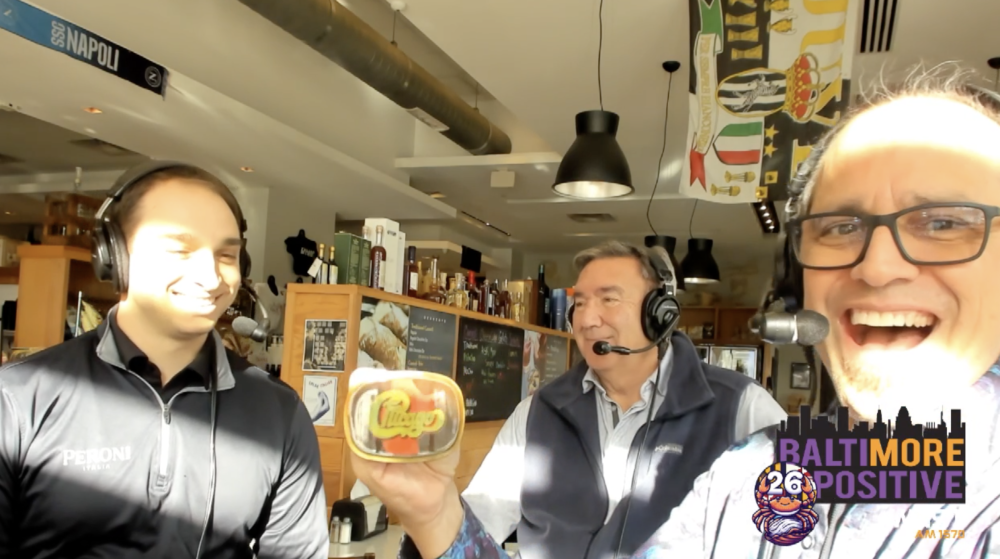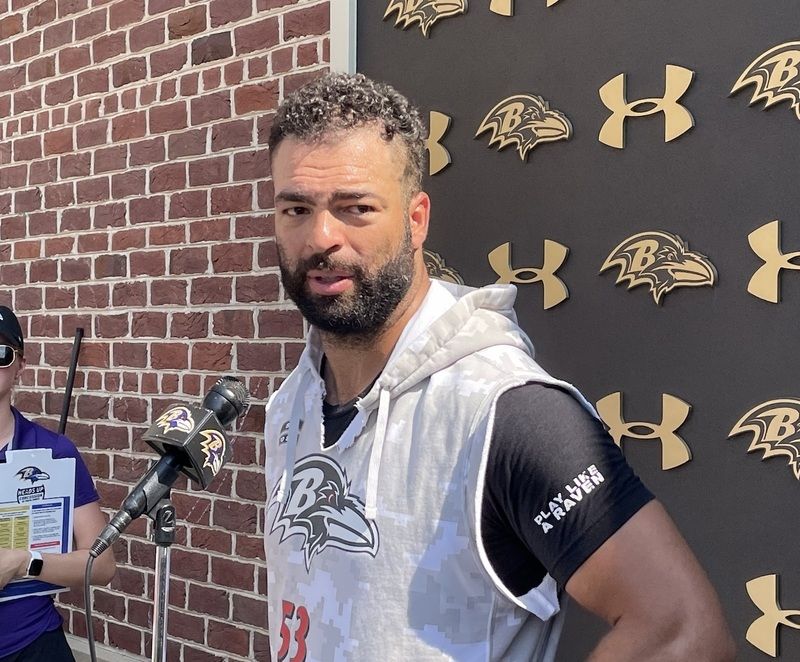OWINGS MILLS, Md. — The Ravens fetched great value in the first round of the 2022 draft.
Selecting 6-foot-4, 220-pound safety Kyle Hamilton — widely regarded as one of the top five prospects in the entire class — with the 14th pick epitomizes the “best player available” mantra we hear every year. Safety typically isn’t a position at which you see many first-round picks, but Pro Football Focus described Hamilton as a “longer” Derwin James capable of playing all over the field, fitting the mold of the “positionless” defensive player the Ravens have sought in recent years. General manager Eric DeCosta said he “never dreamed in a million years” the 21-year-old would still be on the board while head coach John Harbaugh wondered why Hamilton was even bothering to visit the Ravens and jokingly asked him a few weeks ago, “What are you doing here?”
Time will tell where Hamilton falls on the proverbial scale between Pro Football Hall of Famer Ed Reed and a disappointment such as Matt Elam, but selecting the Notre Dame product at that point in the first round was a “no-brainer” in DeCosta’s words.
After plenty of evidence suggesting the Ravens didn’t value centers — another position rarely drafted in the first round — for the better part of a decade, the selection of Tyler Linderbaum at 25th overall was a bold statement about the Iowa product and his potential. You simply don’t make that pick unless you believe Linderbaum — whose biggest knocks were being undersized and playing in a zone-blocking system contrasting with Baltimore’s gap-heavy scheme — is going to be an All-Pro center, but he received strong endorsements from retired eight-time Pro Bowl guard Marshal Yanda and Hawkeyes coach Kirk Ferentz, two individuals with strong ties to the organization. Taking Linderbaum later in the first round after some had mocked him to the Ravens at 14th overall represented good value as long as he becomes Baltimore’s best center since Matt Birk at the very least.
Even if these aren’t positions typically worthy of a first-round pick, it’s tough to dislike coming away with the consensus best player at each spot. The Ravens are betting on Hamilton and Linderbaum indeed being “unicorns” at their respective positions.
But that brings us to the surprising trade of fourth-year wide receiver Marquise Brown and the 100th overall selection to Arizona for a first-round pick that eventually turned into Linderbaum and an additional fourth-rounder from Buffalo. It’s no secret by now that the 2019 first-round pick wanted to be dealt and the Ravens weren’t going to give him a long-term contract in line with the extraordinary costs we’re seeing at the position this offseason. With that understanding, fetching the Cardinals’ first-round pick for a wide receiver with just two years of team control — the second of which projected to cost $13.4 million — is excellent value for the long haul.
At some point, however, we have to consider the coming season and a list of needs that only grew on Thursday night. While the selections of Hamilton and Linderbaum put the Ravens in stronger position for the future, it’s fair to ask whether they’re a better team in the present with their top wide receiver subtracted from the equation and significant needs at outside linebacker and cornerback remaining. And while optimists will immediately point to Day 2 picks being made, it’s worth noting just three of the 14 Baltimore players selected on the second day of the draft over the last five years made rookie contributions that could be described as moving the needle — right tackle Orlando Brown Jr., tight end Mark Andrews, and running back J.K. Dobbins.
At the very least, the defensive roster construction looks clunky with an embarrassment of riches at safety and so little depth at edge rusher and cornerback.
In the same way one could understand the Orlando Brown trade to Kansas City and like the return while acknowledging the challenge it might — and ultimately did — present for 2021, the Ravens now find themselves in a similar position at wide receiver, a position that had appeared to finally find some stability after years of deficiencies. And even if some have insisted on diminishing Marquise Brown’s play in an attempt to further validate the trade, that doesn’t say much for the Ravens’ ability to replace him when he and Torrey Smith — another good but not great receiver whose departure many brushed off before draft bust Breshad Perriman was tabbed to replace him — are the two best wide receivers the organization has ever drafted.
Yes, Rashod Bateman flashed potential as a rookie and is a strong bet to take the next step, but the Ravens haven’t yet earned the benefit of the doubt at the position even after taking six receivers over DeCosta’s first three drafts as general manager.
There’s also the impact this trade could have on Lamar Jackson, a reality that shouldn’t be ignored with the star quarterback at least coming across as agitated on his Twitter account even though he knew the swap was coming, according to both the wide receiver and the Ravens brass. If his best friend on the team was unhappy playing in this offense for the better part of the last couple seasons as indicated in an interview with I AM ATHLETE TONIGHT, it would be naïve not to wonder if Jackson shares at least some of that frustration. And that would add a concerning layer to the 25-year-old quarterback’s long-term contract status.
In a vacuum, the Ravens did very well for themselves in the opening round of the draft, getting good value with their two first-round picks and dealing away a player who no longer wanted to play for them. But football games aren’t played in a vacuum, and the Ravens may not be able to adequately address their many needs by the time the season kicks off in September.
Yes, Thursday brought great value for the future, but with that came greater questions for the present.



























